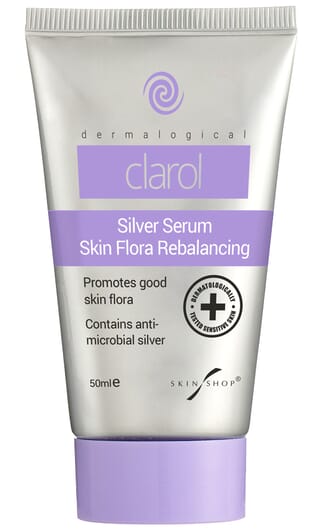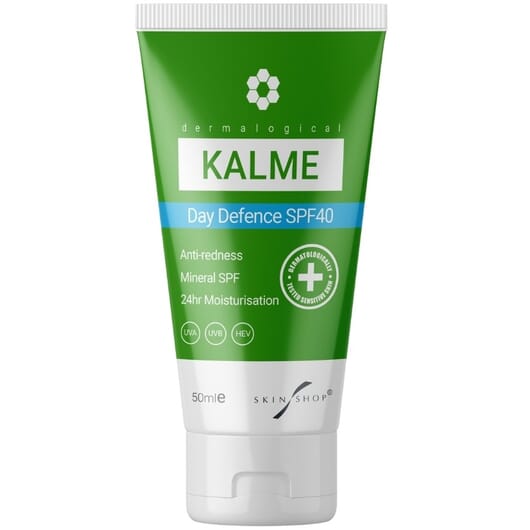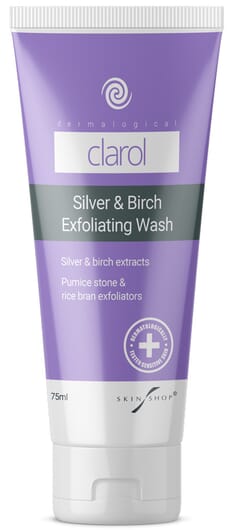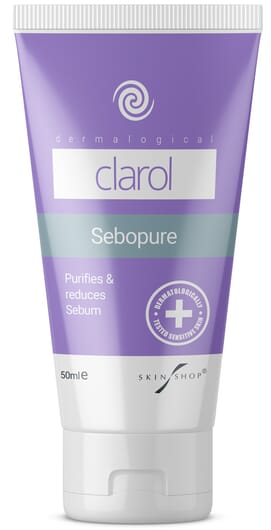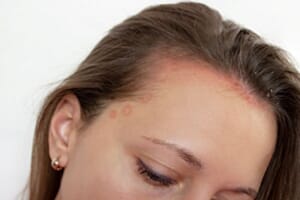According to the latest statistics, 54% of women over the age of 25 have acne, making female adult acne one of the most common skin complaints of adult women.
However with the rise of adult acne, many people are confused about what the difference is between teen acne and adult acne and what acne treatments or acne solutions should be used for each.
Whether you’ve had acne-prone skin for years or whether your acne just began as an adult, there are some crucial differences between teen acne and adult acne that it helpful to know about to help refine your acne treatment regimen.
Consultant dermatologist Dr Eva Melegh explains why teen and adult acne are different and how they should be treated.
Teen acne
What causes teen acne?
Teen acne is hormonal acne and effects boys and girls. It's caused by an overproduction of sebum triggered by hormonal spikes due to the changing hormones in the body going through puberty.
Approximately 80% of teenagers get acne at some stage of their puberty.
What does teen acne look like?
Teen acne is typically characterised by breakouts in the T zone, which is between the eyes, forehead and the nose and tends to appear as individual blackheads, whiteheads or pustules.
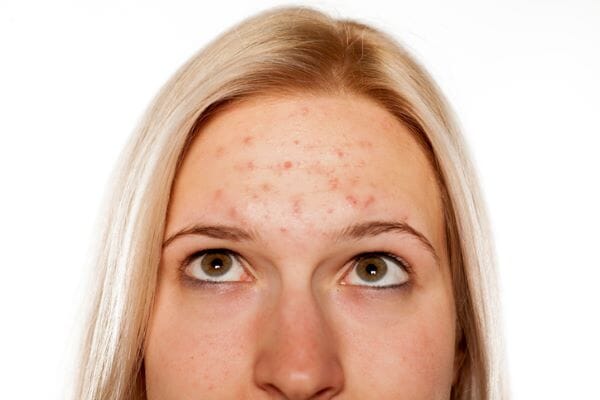
What is the skin type of teen acne?
The skin type of teen acne is typically oily skin
How do you treat teen acne?
Teen acne usually responds well to acne treatment options containing anti-bacterial agents, namely benzoyl peroxide, which is a type of abtibacterial 'bleach' for the skin. However long term use of these products can lead to skin becoming drier and more sensitive, which in turn can then trigger sensitive skin in adulthood.
Regular cleansing and exfolation is very important for teen acne. Teens should wash skin twice daily with a gentle but effective cleanser and once a day with an exfoliant for acne-prone skin.

Most exfoliating products aimed at teen acne contain an agent called salicylic acid. Salicylic acid can exfoliate the skin as well as decrease inflammation. The cells in the lining of the hair follicles of teens with acne tend to multiply quickly, and stick to one another. Salicylic acid works by dissolving this cement that holds those sticky cells together in the clogged pores.
All products containing salicylic acid should be thoroughly washed off the skin after exfoliating as they can stain the skin permanently and cause irritation if left on the skin for long periods of time. There are also some natural acne treatments that offer effective alternatives to salicylic acid exfoliants that do as good a job but without causing so much damage to the skin or longer term issues.
Cheaper formulation sun creams and matt cover foundations or compacts can also add to the problem of teen acne by clogging up pores with wax based agents.
Mineral sun creams containing zinc and multi-tasking treatment foundations or tinted moisturisers with anti-bacterial and good skin flora agents in them can help keep acne breakouts to a minimum. In addition over night spot treatments or spot concealers with ant-acne ingredinets can help treat and camouflage spots at the same time.
New developments for treating teen acne
One of the most recent developments for treating teen acne are agents that help prevent the sebum in a spot from oxidisating which is what causes pores to clog and inflame and then leads to puss.
Like all organic material when exposed to heat and light, when sebum pools in the skin pore it can quickly go off and that is when the spot becomes infected.
Instead of trying to dry up sebum to avoid this, which only makes teen skin produce even more sebum, setting up a vicious cycle some new generation acne products contain targetted sebum preservatives to stop the sebum going off and keep sebum pure as it passes out through the skin pore preventing acne while not disrupting sebum production.
Adult Acne
What causes adult acne?
Although men get adult acne, women are at least twice as likely to have adult acne than men. Adult acne is usually caused in both men and women by stress and illness but in women the biggest cause is hormonal flux during pregnancy and menopause, although men can also get adult acne form hormonal shifts from being overweight or from high levels of exercise and muscle growth.
Adult acne can also be triggered by over sensitive skin due to a build up of intolerance to chemicals in skincare and cosmetics combined with age-related weakening of the skin , leading to 'reactive acne'.
Adult acne accompanied by flushing and redness is caused by changes and weakening in the vascular structure of the blood vessels beneath the skin's surface that gets worse with age, which is a type of acne called acne rosacea.
In addition as you age, the strength of the cellular wall of a pore weakens. This makes the pore stretch out and become larger making it more likely for the pore to become clogged with surface dirt and debris from your skin’s top layer (the epidermis). While most adult acne is caused by hormonal shifts, the changes in the structure of your skin and the size of your pores due to ageing can lead to ‘patches’ of inflamed red blemishes and the appearance of more open pores.
What does adult acne look like?
Adult acne occurs or in red clusters in lower part of the face and is usually found on the cheeks, around the mouth, on the jaw line, and on the neck and is often paired with sensitivity and dryness making treatment more complex.
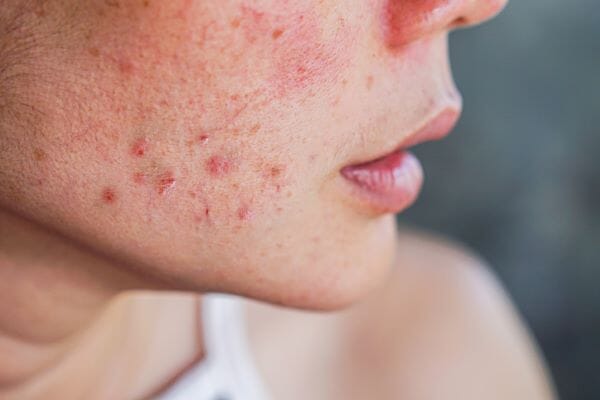
Adult acne is often formed as clumps of smaller pussy or bumpy spots under the surface rather than individual larger blackheads or pustules as with teen acne. Adult acne is often accompanied by an underlying redness.
What is the skin type of adult acne?
Adult acne skin type is usually sensitive and combination skin, so oily in patches yet very dry and sensitive in others.
How do you treat adult acne?
Ironically adult acne tends to be more persistent than teen acne and is more complicated to treat.
The skin on the bottom of your face is typically more sensitive than on your forehead. This makes treating the acne more problematic as if you irritate or aggravate it while treating your acne, you may end up with even more redness, bumps and irritation.
So with adult acne its best to try and avoid products aimed at oily skin or teen acne which contain harsh anti-bacterial chemicals such as benzoyl peroxide or azelaic acid. It’s also best to avoid any product with any more than 2% salicylic acid in it, as this really strips the skin of oils and can dry out adult skin causing further irritation.
Adult acne responds well to combinations of defence-building, skin-strengthening , anti-inflammatory anti-acne skincare regimes for senstive skin rather than sebum stripping anti-bacterial treatments. It can’t just be treated with one method like teen acne
The key difference in treating adult acne as opposed to teen acne is maintaining the integrity and balance of the healthy skin around the acne, while at the same time reducing the bacteria getting into the acne lesions. Its crucial that skincare regimes and products do BOTH, as skin is more fragile, drier and more sensitive.
Adult skin needs cleaning less than teen skin and with differnt techniques as over-cleaning adult skin can irritate already sensitive skin and dry it out. Cleaning adult acne skin with gentle water-free cleansing and skin toning and pore reduction products to clean skin is more effective and less dmaaging than anti-bacterial washes and scrubs.
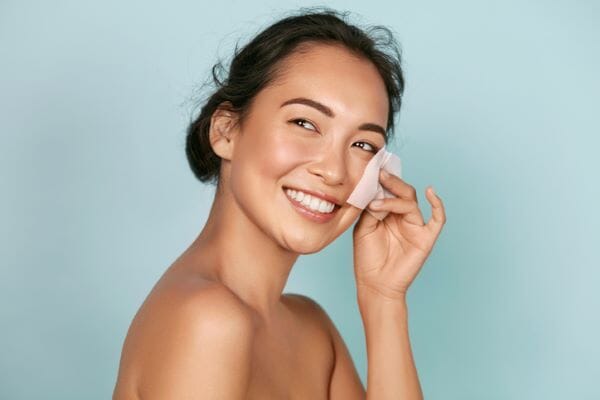
Products containing birch extracts are excellent for use on adult acne as they do similar actions to salycylic acid in cleaning the skin but without the damage.
Skin care products containing caper extract have also been shown to help reduce skin redness and inflammation and are particularly effective for acne rosacea.
Sun creams containing pure zinc can also help with rashy and inflammed or rosacea-type adult acne as the zinc acts as potent anti-inflammatory.
New developments for treating adult acne
A more recent development in treating and managing adult acne is by using products that increase the levels of good bacteria on the surface of the skin.
Higher levels of good skin bacteria on the surface of the skin helps in two ways, it reduces the levels of bad bacteria which can get into acne lesions and blocked pores and cause swelling and puss. It also helps strengthen the integrity of older skin, helping to reduce pore stretching and appearance of open pores.




